Above: New York ironweed.
By George Christie
As the hotter days of summer slowly become less frequent, the flowers of the summer garden, the coneflowers, black-eyed Susans, and bee balms, start to fade. Fortunately, our Rhode Island native plants have one more lengthy burst of floral color, before the deciduous leaves of our shrubs and trees glorify our fall with their display.
Goldenrods and asters are two of our most prolific bloomers. Though the meadows of goldenrod, over which the seeds of milkweed float on late summer days, are fewer than in years past, the many species of this genus (Solidago) still brighten our beaches, roadsides and walkways with their splendid yellow colors. Asters, ranging from the prolific woodland aster in white, to the beautiful New England aster in rich purple, seem almost made to blend in colorful harmony with the goldenrods.
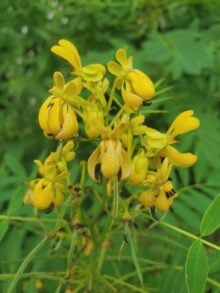
Wild senna
While goldenrods and asters dominate, there are plenty of other late bloomers to add to your Rhode Island native garden. As the rare species data clerk for the RI Natural History Survey, I have a particular interest in plants that were once more plentiful in the state but haven’t been seen in the wild in years. One such is Senna hebecarpa (Wild Senna), a northeast native typically found in moist forests or along streams. In Rhode Island, however, you’d be extraordinarily lucky to find it at all, and, if you do, it was probably planted by someone. I didn’t have any luck growing it from seed, but this year I found straight species plants at Blue Stem Natives in Norwell, Mass. It’s a vigorous grower, mine got over three feet tall even after being planted in June, and develops unusual yellow flowers that will brighten any late summer space. Bees seem to love to visit them, and the seeds can be eaten by some birds. The plant is the larval host of sulfur butterflies, a benefit in my mind. Its ability to handle damp situations also can enliven spots where you’d almost given up and let the nut sedge win.
Vernonia noveboracensis (New York Ironweed) is a 6 to 7 foot giant, best planted in the rear of any wildflower garden. New York ironweed produces some of the richest late-summer purple blooms in New England and is a perfect addition to a Rhode Island native garden. Although not rare in the wild like wild senna, it isn’t particularly common in home gardens yet. Some of this may have to do with its height, and some may have to do with the fact that people simply don’t know to ask for it. My experience is it is not too hard to find as the straight species at garden centers and planting it this fall will ensure a large display next August.
Okay, I’m going to “cheat” a bit with my last late-summer favorite both because it isn’t native to Rhode Island, and because it blooms earlier in the summer. I have my reasons, though. As far as nativity, oakleaf hydrangea (Hydrangea quercifolia) is a southern species, most common in Alabama and Mississippi, though it extends north into Tennessee and North Carolina. However, as temperatures warm in the northeast, this adaptable species can thrive in a typical Rhode Island garden. The straight species can get 8-plus feet tall, but the plant is easy to prune to size and, unlike the big leaf blue-blooming hydrangeas, you don’t have to worry about the old wood—new wood issue, simply prune in late winter or early spring. Regarding those mid-summer blooms, their weeks as creamy white flowers have now passed, and they’ve developed a delightful pink tint as they aged. But they’re not done! Starting from the base of the panicle of flowers, the pink turns to a rich sienna brown, and the floral heads create one last burst of non-traditional color as the summer winds down.
As always, I urge you to go to your local garden center first and ask them if they have, or can they get, open-pollinated, straight species plants for you. However, if they cannot, thank them for trying and check out such places as Blue Moon Farm on Saugatucket Road in South Kingstown, Blue Stem Natives in Norwell, Mass., or Garden in the Woods in Framingham, Mass.
Formally trained in entomology and landscape architecture, George Christie has worked in mosquito control, environmental education and garden design and plant sales. He currently works for the Rhode Island Natural History Survey managing their rare species database.

An oakleaf hydrangea blossom in August


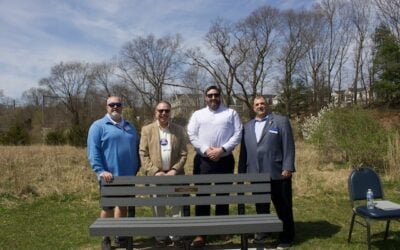
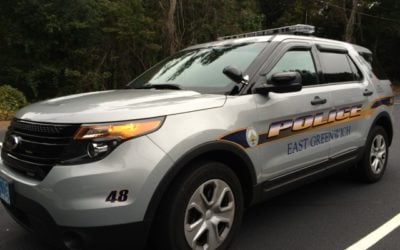
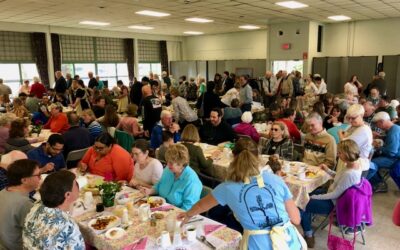
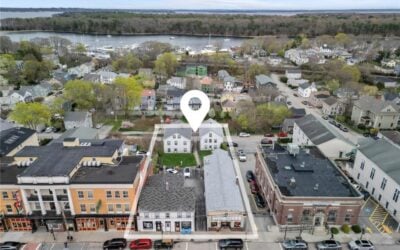
 Subscribe
Subscribe
Please, more posts about native plants. I’d love to have less lawn to mow, and more wildlife taking advantage of the flowers etc.
Stay tuned! In the meantime take a peek at https://homegrownnationalpark.org/
A lot of good information there.
Or swing by Wildwood Nursery on Frenchtown (full disclousure, I used to work there). They have a native plant section and staff to help guide you in your selections.
So glad you’re interested in adding native plants to your garden. Fall is a great time to plant for next year’s garden.
While an East Greenwich, R.I. native I now live in Virginia and enjoy many of the plants you have mentioned. I am a member of the Home Grown National Park and a firm believer in Doug Tallamay’s belief that we need to plant natives in our yards. I always enjoy reading the pieces you write for the EG News.
Joyce, Thank you for the kind words. It’s true Rhode Island and Virginia share many of the same plant species or very similar plants in the same genus. I’m a Delaware boy by birth so the mid-Atlantic will always be special to me.
Years ago I saw a New Yorker cartoon from WWII where a woman was walking out her front door with a basket full of her victory-garden veggies for her neighbor, only to discover her neighbor coming up the walk with a basket of HER victory-garden veggies. Perhaps some day when we take native plants to a friend, we’ll find our friend bringing native plants to us!